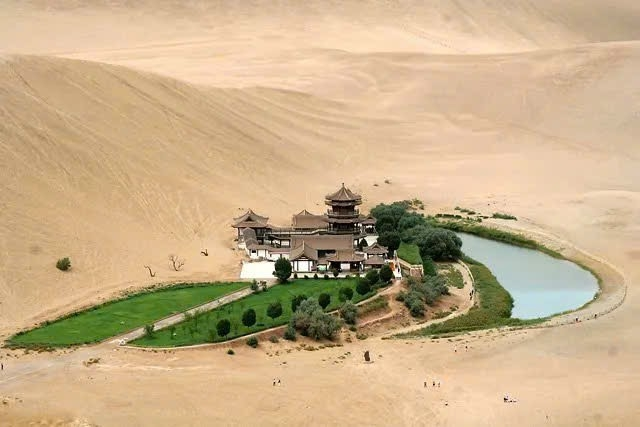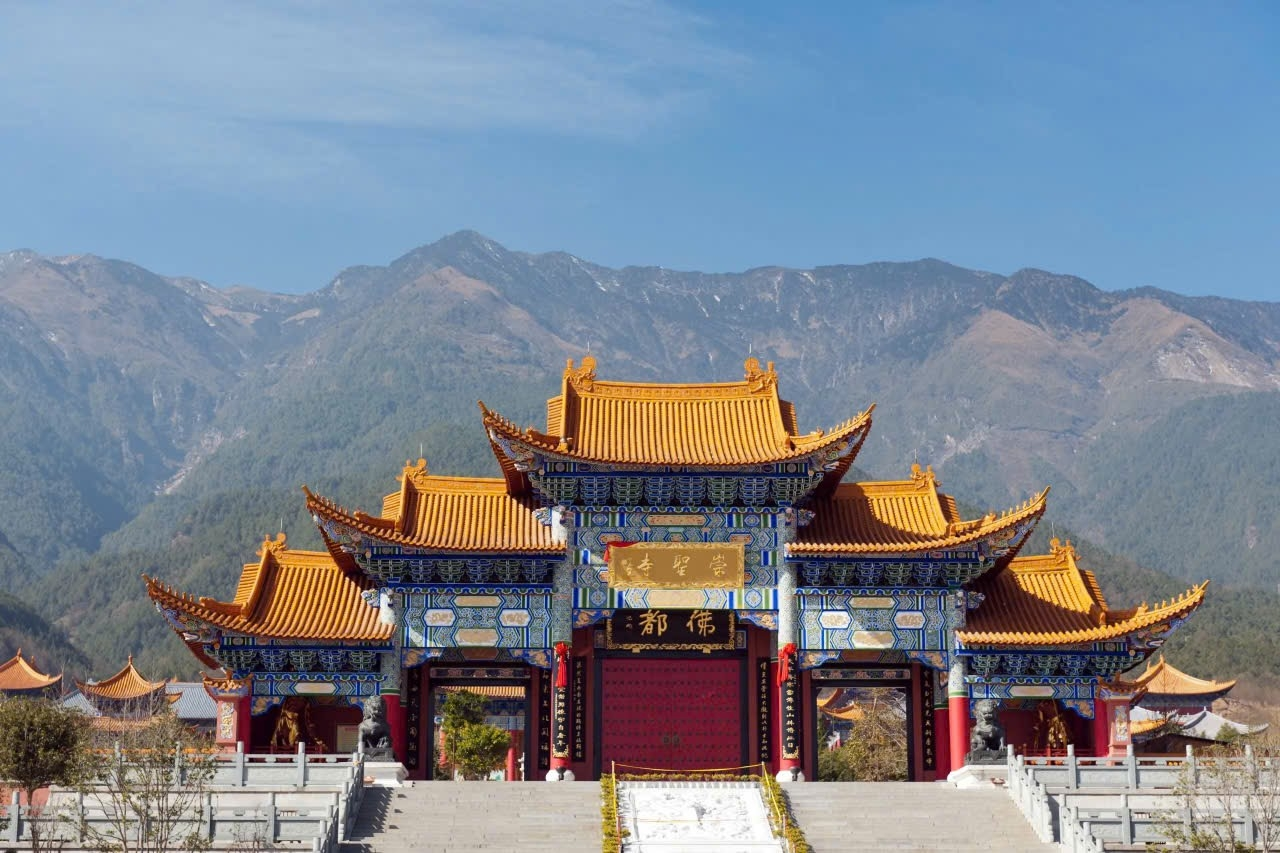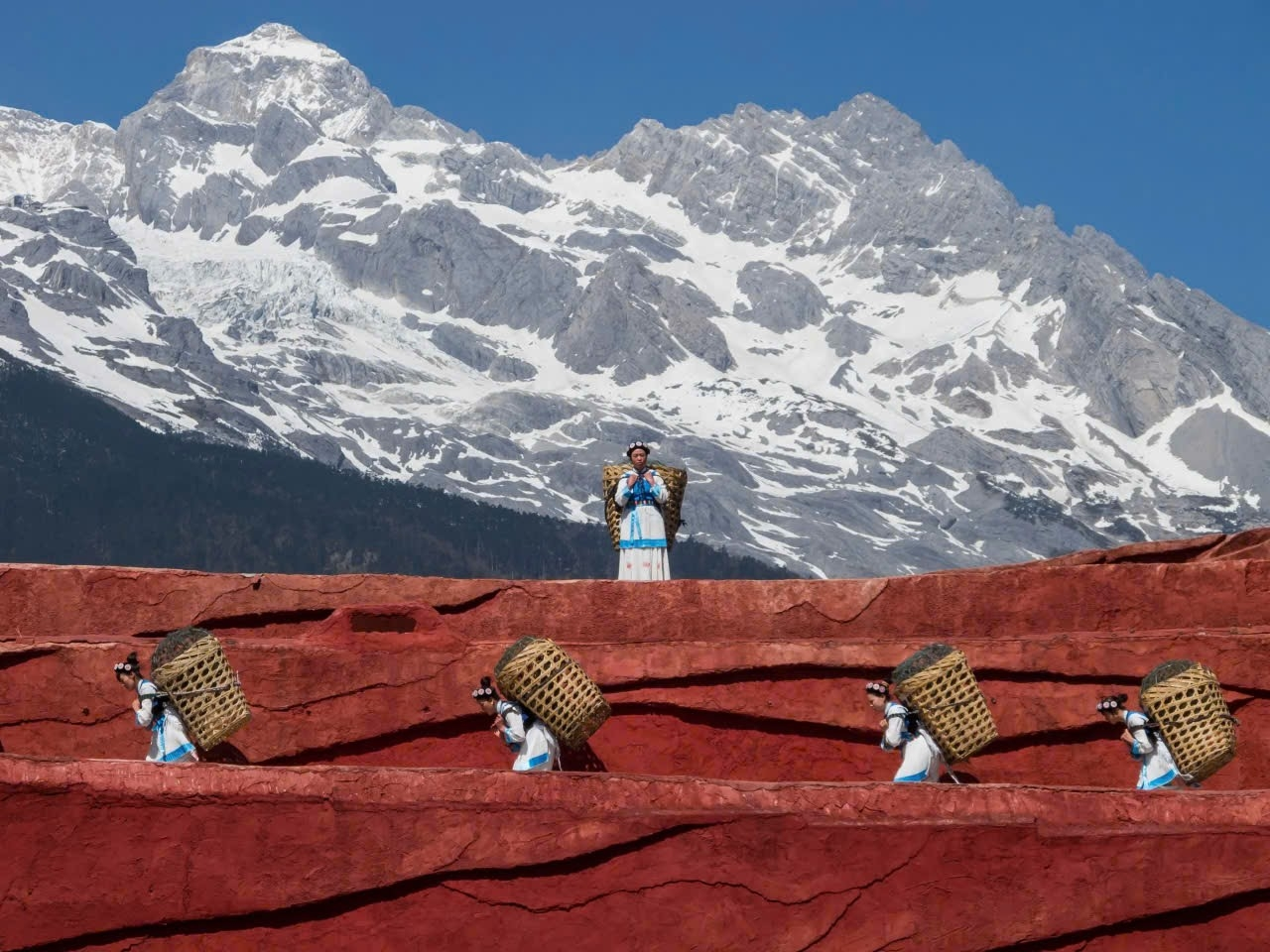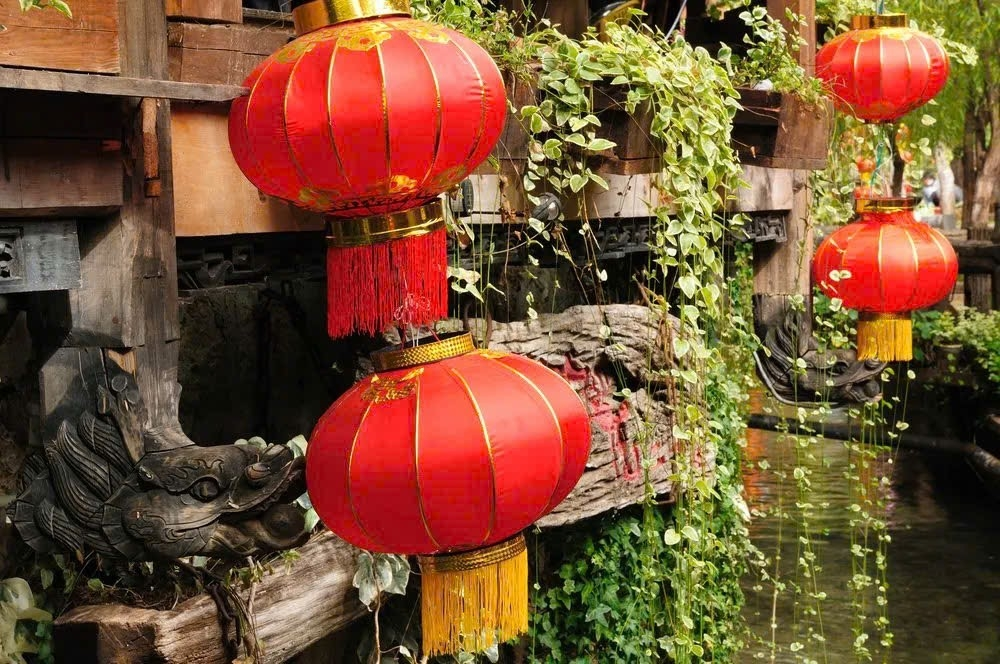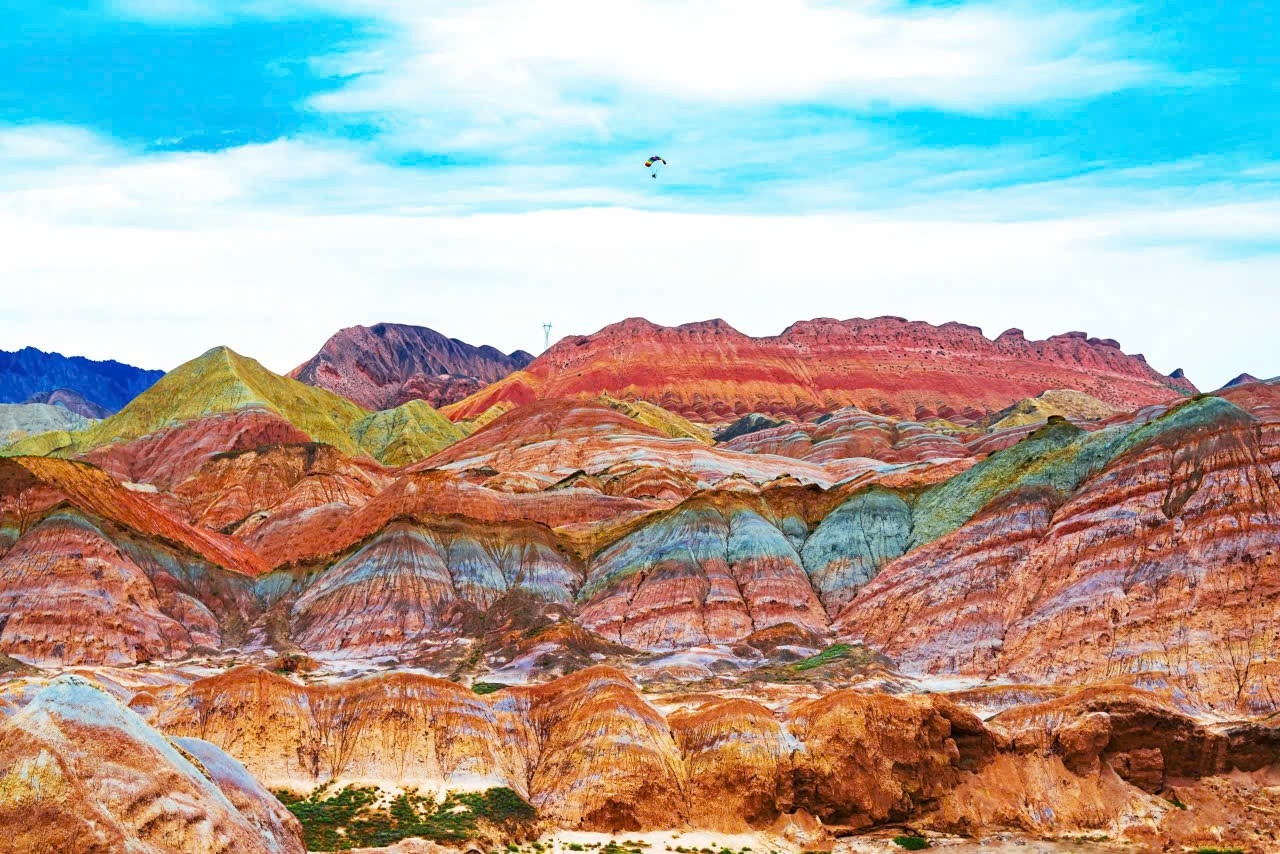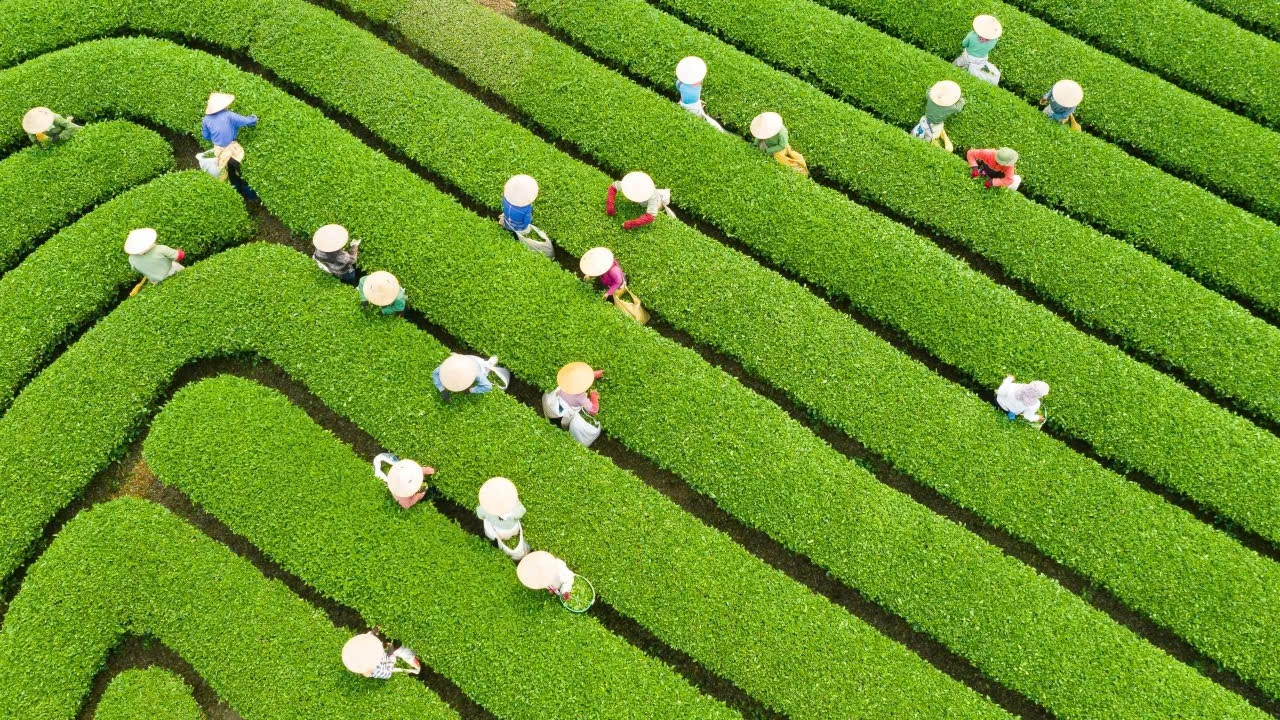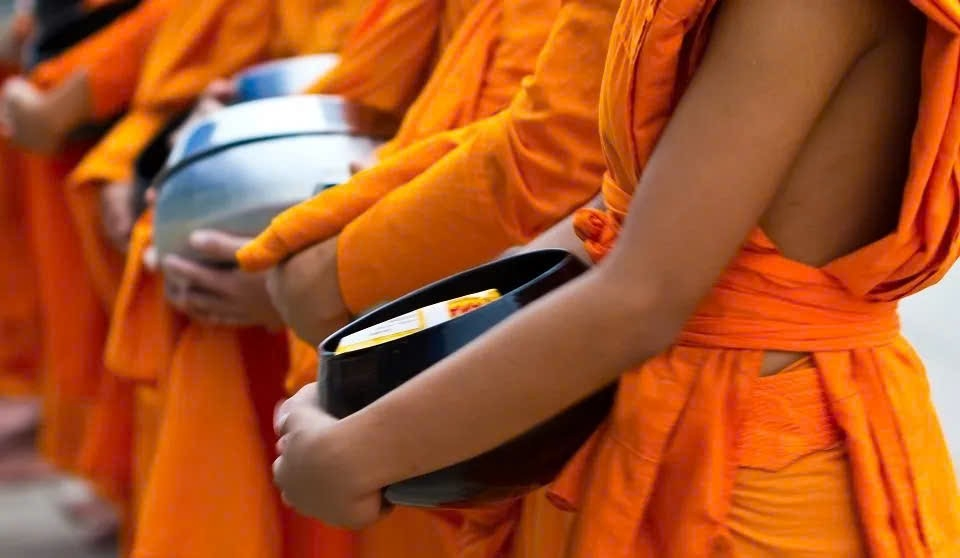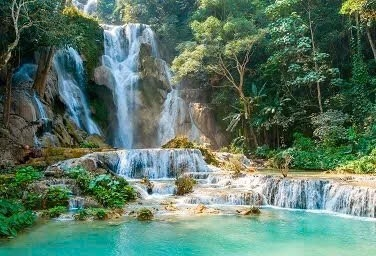From China to Laos 14 Days: Exploring the Ancient Tea Horse Road
Trip Highlight
- Chengdu Giant Panda Breeding Research Base
- Hike Tiger Leaping Gorge
- Explore ancient time-frozen villages and mingle with minority tribes
- Marvel at the impressive Danxia landform
- Cycle around Erhai Lake
- Pluck tea leaves with the locals
- Participate in morning alms with monks
- Get hands-on in a rural farming experience
- Swim in Kuang Si Waterfall
Trip Overview
Travel on a journey through time, tracing the historical trade route where tea from Yunnan was exchanged for horses in Tibet.
Trek along the remnants of the Tea Horse Road, marvelling at the changing landscapes and exploring tea plantations. Immerse yourself in the vibrant ethnic villages, sharing meals and moments with friendly locals who warmly invite you into their traditions of singing and dancing. Encounter 25 diverse ethnic groups, including the lesser-known Jinuo ethnic group. Uncover the traces of the ancient Tea Horse Road in Yunnan, from the well-restored areas of Dali and Shaxi to the immersive activities of tie-dyeing and tea ceremonies. Marvel at the challenging Tiger Leaping Gorge and experience the daily life of the locals in morning markets.
Cross into Laos with ease, taking a smooth and modern train from Xishuangbanna to the enchanting city of Luang Prabang. Delve into the immersive experiences and serene Buddhist temples this UNESCO World Heritage site has to offer.
Itinerary
Day 1 - Arrival in Chengdu
Welcome to China! Upon arrival at Chengdu Airport, you will be met and transferred to your hotel (70km, 1.5 hrs). The remainder of the day is yours at leisure. Chengdu is the capital of the Sichuan province, the home of pandas, face-changing, and spicy food. Sichuan reflects China’s laid-back lifestyle.
Day 2 - Lijiang
This morning you will drive to visit the Chengdu Giant Panda Breeding Research Base for a look at China’s universally adored mascot. The base itself aims to provide an accurate simulation of the panda’s true living environment. Once the pandas are adjusted to living here, the plan is to release them into the wild for the continuation and preservation of this endangered species. Visit early morning to see them being fed, climbing the trees, and sleeping before eating again in the afternoon. There are open grounds for pandas to roam freely and a nursery where babies are cared for.
Spend a leisurely afternoon in People’s Park, the largest green area downtown. With a lake, gardens, teahouses, and monuments, it’s the best place to observe the lives of locals. Stroll along the lake, watch people sing, dance, paint water calligraphy, or take a cup of tea in one of the teahouses and learn how to play Mahjong or Chinese chess.
In the early evening, transfer to the airport for your flight to Lijiang (1hr 40min). Lijiang, or ‘beautiful river,’ is the capital of a large area inhabited by the Naxi minority people. Before this area was conquered by Mongolian Kublai Khan in the 12th century, it used to be a prosperous kingdom with a very strong culture – especially their unique style of writing Chinese characters.
Arrive Lijiang (1,980 m above sea level) and transfer to your hotel.
Day 3 - Tiger Leaping Gorge
Be an early riser and make your own way to capture the sunrise at Black Dragon Pool, set against the backdrop of Snowcapped Jade Dragon Mountain (25-min walk), Sunrise will be around 7.30 am. After breakfast, drive to trace the ancient path of the tea and horse road that winds its way through Shuhe village (10 min drive) – a place deeply rooted in the history of Naxi ancestry. With its stone-paved streets and serene babbling brooks, Shuhe is a snapshot of traditional Naxi life. Imagine a thousand years ago, merchants laden with silk, paper, salt, and above all, tea, halted at this village to rest their weary feet and nourish their horses. Meander through the streets, and it feels like you can still hear the exchanges of excited conversations and catch the lingering scent of spirits in the air.
After lunch in Shuhe village, embark on your adventure to Tiger Leaping Gorge (95km /1.5hrs – 3,000 metres above seal level), renowned as one of the deepest gorges in the world. An ancient legend says that a tiger used this rock as its stepping stone so it could leap across from one side of the gorge to the other, which is how this gorge earned its name. As a rugged and breathtaking natural wonder, it was once a crucial passage along the trading route.
Challenging your physical endurance, trek up to the halfway point and down to Tina’s Inn (4-5 hrs.) where you will hop in your vehicle and return to your retreat for a sound sleep.
Day 4 - Lijiang to Shaxi
After breakfast, continue your road trip to Shaxi (100km, 1.5 hr drive), once a thriving trade station on the Tea and Horse Road. During the late 19th century, Victorian botanists came to Shaxi to collect exotic plant specimens for ornament gardens that were becoming popular in Europe and America. The plants flourishing in many parks, estates, and gardens in the West originally came from this part of the world. But this is not just the botanical legacy that captivates people. Although trade between Yunnan and Tibet no longer traverses this route today, Shaxi retains a border-town ambience. Its cobblestoned alleyways have kept their charm, reminiscent of how they appeared a thousand years ago.
Your guide will give you a good recommendation for lunch where merchants used to consume their food (not included).
Visit Sidhenjie, the heart of Shaxi where all the commercial trades were done. It’s in a square shape surrounded by a stage, temple, shops, caravanserai, red-rock roads, aged trees, and camp gates. Stroll through the streets, cross the bridge, and visit the Xinjiao Temple. This sacred site witnesses the countless hardships, prosperity, laughter, and tears that are etched into the very fabric of the ancient tea horse road.
Day 5 - Shaxi
Begin your day at Baoxiang Temple, a temple built into the cliff on the side of the mountain. Following the steps, we go into the temple—be careful with the monkeys who are never shy to ask for food! Return to your hotel.
After viewing the Baoxiang Temple, take a 10-min drive to Shilong Village, a Bai village, where they have a local produce of bacon. Here, you will engage with local people and observe the harmonious life in the village.
End your day with a thrilling hike and be awed by the mesmerising stone carvings in Shibaoshan, literally Stone Treasure Mountain. It’s a stunning complex of temples perched high on a mountain featuring cascading waterfalls and enchanting forested trails. The geology here is known as a danxia landform, made up mainly of red sandstone and conglomerates dating back to the Cretaceous period. You will remain at Shibaoshan for around an hour. The walk will involve some climbing and sightseeing and is easy-moderate.
Day 6 - Shaxi - Dali
Hit the road for two hours through Dali, a region known for its Bai ethnic culture. Wander through the streets of the old city, the Bai dwelling area, where you will look closely at the Bai people’s traditional residences. En route, stop at Zhoucheng and try your hands at Tie-dye.
Next, marvel at the Three Pagodas, an iconic symbol of the region that stands tall with a rich historical legacy.
Day 7 - Dali
An early morning start to experience the morning markets in Xizhou, where an array of local produce awaits. Vendors proudly display their variety of fruits, fragrant spices, and other enticing goods. Hire a bicycle and pedal around Erhai Lake (payable locally), soaking in the tranquil atmosphere and breathtaking vistas. After a short lunch, hop on the fast train to Kunming (200 km, 2 hr 20 mins). Upon arrival, you will ascend the West Hill and be captivated by the grandeur of Dragon Gate. This day promises to be filled with delightful encounters, cultural immersions, and self-discovery.
Day 8 - Kunming - Pu'er
This morning, drive for 1.5 (90km) hours to the Black Stone Forest. Towering limestones, weathered by time and elements, create an otherworldly landscape. Wander through a labyrinth of stone pillars and marvel at the natural sculptures that stand before you, each with its own story etched into its rugged surface.
In the afternoon, relax on your 2-hour train to Pu’er (200 km, 2 hrs) where the ancient tea horse road originally started. This region is known as the birthplace of tea and offers a haven for tea enthusiasts and those seeking to explore the depths of Chinese tea culture.
Day 9 - Pu'er
With anticipation and excitement, we embrace the next leg of our journey, letting the allure of the Chashitang section of the Tea Horse Road guide us forward. You will walk around 30-45 minutes to witness the remnants of the past, imagining the footsteps of those who traversed this very path centuries ago. The path ahead promises adventure, discovery, and a connection with the deep past of this region.
After the exhilarating trek, rest your weary feet and quench your thirst at Laodabao Village, home to the Lahu People, who have a natural talent for singing and playing musical instruments. The village is nestled amongst picturesque surroundings, with lush greenery and rolling hills. Sitting with one of the local families, you have the privilege of listening to family stories passed down through generations. Learn about their triumphs, challenges, and accomplishments. Savour the flavours of their homemade dishes, and try the fruits grown in their own yard before bidding farewell to the Lahu people.
Continue to Wengji Village, inhabited by the Jinuo People. Among the 55 ethnic groups in China, Jinuo is recognised as the last remaining group. The village is home to around 400 individuals whose lives revolve around the tea industry.
Then, you will explore Nuogan Village, inhabited by the Dai People, who make up the majority of the population in the Xishuangbanna area. The Dais here differs from those you will see in Xishuangbanna, with housing styles, colours of their tiles, and costumes heavily influenced by the Jinuo and Lahu.
Return to Nuogan Village to stay at Jingmai Jingzu Homestay, a newly opened homestay in the Tea Mountain area.
Day 10 - Pu'er - Xishuangbanna
Venturing towards Xishuangbanna, stop at Guangmangshan tea plantation (2.5hr drive) where you will join locals to pluck tea leaves. Learn the intricate steps of tea leaf processing, discovering how important the factors of temperature and time are to create a perfect blend of flavour.
Partake in a tea ceremony, savouring each sip as you allow the flavours to dance on your palate. Enjoy lunch at the restaurant in the village. In the evening, you will arrive at your hotel in Xishuangbanna (600m above sea level), a Dai-inhabited region.
Day 11 - Xishuangbanna
Start your morning with talks with the monks at General Buddha Temple, a holy place revered in the hearts of believers in Xishuangbanna. You will be greeted by astonishing blossoms in the nearby Manting Park. The air becomes infused with the delicate fragrance of the flowers, and your senses are tantalised by the vibrant colours that paint the scene before you.
Continuing your journey, venture further into the countryside, seeking out the Dai people who have proudly maintained their own way of life. Witness their traditional lifestyle firsthand as you delve into their warm and hospitable culture. Be prepared to be swept away by the vibrant starry night market. This lively market is a feast for the senses, from a wide array of street food that satisfies your taste buds to meticulously crafted beers, where you will indulge in a culinary adventure.
Day 12 - Xishiangbanna - China/Laos border - Luang Prabang
This morning you will say farewell to your guide who will see you off at the train station and begin your journey to Luang Prabang by train (2.5hrs ride). This direct train started on April 13, 2023. The train stops in Mohan, where you are required to go through customs, after which you will board the train again to Boten, where you enter immigration in Laos.
Saibadee! Welcome to Laos. Upon arrival at Luang Prabang train station, you will be met by your local guide and transferred to your hotel. The UNESCO World Heritage small city of Luang Prabang is a favourite for many travellers. Nestled in the hills of northern Laos between the Mekong and Khan Rivers, it is a wonderful place to explore by foot or jump onto a Jumbo (local transport) to experience a local’s perspective on the town.
Tonight, you will experience a Laos feast. Served family-style, you will have the opportunity to taste many special local flavours and foods, from chunky bamboo soup to sausages and dips, accompanied by sticky rice, herbed fish in banana leaf, lemongrass-stuffed chicken, pumpkin with kaffir lime and ginger, and a selection of sweet Laos confections.
Day 13 - Luang Prabang and Pak Ou Cave
After breakfast, enjoy a short, guided tour exploring the city’s oldest temple, Wat Sene, and the magnificent Wat Xiengthong, with its roof sweeping low to the ground, which represents classical Laotian architecture. You will also visit the National Museum (former Royal Palace), which hosts a range of interesting artefacts, and the Traditional Arts and Ethnology Centre to learn about Laos’ many ethnic minorities.
You then board a 2-hour cruise upstream on the Mekong River, providing you with a panoramic view of the tranquil countryside, as well as an interesting visit to the mysterious Pak Ou Caves. Two linked caves are crammed with thousands of gold lacquered Buddha statues of various shapes and sizes left by pilgrims. Afterwards, return to Luang Prabang by road transfer.
Optional climb to of Mount Phousi
You might want to climb up to the top of Mount Phousi, where you can explore the sacred, gilded stupa and take in sweeping views of the city and the Mekong River at sunset.
Finish the day visiting the famous Night Market, where you can find a fascinating selection of handmade textiles made by local and hill tribe people surrounding Luang Prabang.
Day 14 - Luang Prabang - Rice Farming - Kuang Si waterfall
An early start this morning as you experience the mystical aura of Luang Prabang and participate in the daily morning rituals of saffron-clad monks collecting offerings of alms (often in the form of sticky rice) from the faithful residents.
After breakfast, visit a community-based rice farm in the peaceful countryside, surrounded by mountains and rice paddies. Try your hand at farming activities for a glimpse into the daily life of a farmer—fun for all ages and great for photos. If you prefer a more relaxed experience, you can watch the farm in action from the balcony of a traditional Lao rice house, overlooking rice terraces and an organic vegetable garden. During your time on the farm, you’ll also learn about bamboo weaving, blacksmithing, and sugarcane processing. Afterwards, tour the organic garden and find out how natural herbs are used in traditional medicine. Enjoy lunch at a restaurant with views of the farm to round off the experience.
Afterwards, you drive to the beautiful Kuang Si Waterfall, where you can splash around in the turquoise pools or walk along the forest paths. On the way, you will visit Ban Na Oun, a minority village of Hmong people. There’s also an opportunity to visit the bear sanctuary near the waterfall, which is run by Free The Bears Fund Inc. This sanctuary protects and rehabilitates the endangered Asiatic Black Bear.
You finish the day with a visit to Ock Pop Tok. This Laos-based social enterprise works primarily in the fields of textiles, handicrafts, and design. Meaning ‘east meets west’, Ock Pop Tok brings the fascinating world of traditional Lao handicrafts alive for visitors. The Living Crafts Centre, overlooking the Mekong, is the heart of Ock Pop Tok and a fascinating place to visit. Enjoy a drink at Ock Pop Tok Silk Road Café and take in amazing views over the Mekong before transferring to the airport for your evening flight.




